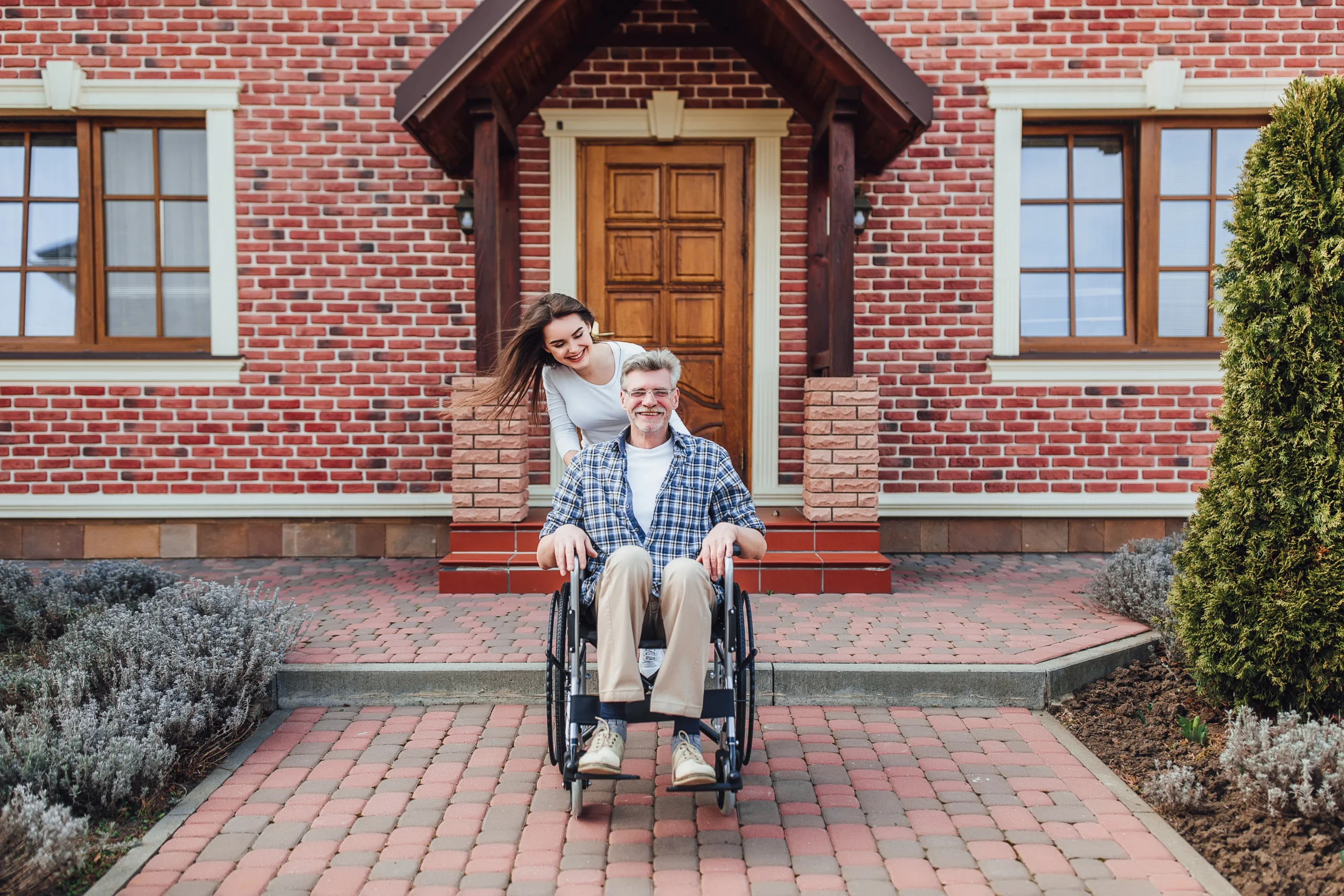These simple modifications make a profound difference in daily comfort, safety, and independence.
These easy-to-make memory care adaptations aren’t just about managing symptoms, they’re about preserving dignity and quality of life for the elderly in need of memory care.
Whether you’re addressing short-term memory loss in elderly parents or supporting someone with more advanced cognitive changes, the right environmental modifications can dramatically improve daily experiences for everyone in your household.
Why Your Home Environment Matters More Than You Think
Memory care at home starts with understanding a fundamental truth: when cognitive function declines, the environment must work harder to support daily life.
A memory-friendly home doesn’t just happen, it requires intentional design choices that anticipate common challenges.
Research shows that familiar environments significantly reduce anxiety and confusion for people experiencing memory changes.
This means your home already has a powerful advantage over institutional settings, but only if you optimize it properly.
The most effective memory care home solutions address four key areas: navigation difficulties, safety hazards, overwhelming stimuli, and loss of independence.
By targeting these specific challenges, families can create environments that truly support cognitive function rather than working against it.
Easy-to-Make Memory Care Adaptations for Better Navigation
Poor navigation is often the first major challenge families notice.
Previously familiar hallways become confusing, and simple tasks like finding the bathroom at night become anxiety-inducing obstacles.
Start with strategic lighting improvements.
Motion-sensor lights in hallways eliminate the cognitive load of remembering where switches are located. Install them in key pathways: bedroom to bathroom, kitchen entrances, and stairways. Bright, even lighting reduces shadows that can create visual confusion or appear threatening.
Use color contrast as your navigation tool.
Paint door frames in colors that stand out from walls, deep blue frames against beige walls, for example. Add bright tape to stair edges (yellow or orange works well). These simple visual cues help the brain process spatial information more effectively.
Clear the pathways completely.
Remove area rugs, unnecessary furniture, and decorative items from main walking routes. The path from bedroom to bathroom should be especially clear since this route is frequently traveled during vulnerable nighttime hours.
Read more: Memory Care Designs: How Layouts Reduce Confusion
Add meaningful visual landmarks.
Place familiar family photos at key decision points, the junction where hallways meet, or outside the bathroom door. These serve as both navigation aids and comfort items.
Essential Safety-Focused Memory Care Adaptations
Don’t wait for an accident to implement safety changes.
The key to effective in-home memory care is prevention, not reaction. Memory changes often affect judgment and physical awareness, making previously safe environments potentially hazardous.
Transform your bathroom immediately.
This room presents the highest injury risk for people with memory challenges.
Install grab bars near the toilet and inside the shower, use textured non-slip mats, and consider a shower chair.
A raised toilet seat makes transfers easier and safer. Ensure the bathroom door can be unlocked from the outside in case of emergencies.
Secure your kitchen thoughtfully.
Memory challenges often affect cooking safety judgment. Install automatic shut-off devices for stoves, secure sharp knives in locking drawers, and keep frequently used items in consistent, easily accessible locations.
Label cabinets with both words and pictures; many people retain visual recognition longer than reading ability.
Address fall prevention throughout the home.
Install handrails on both sides of staircases, secure loose carpets with double-sided tape, and remove furniture with sharp corners from main pathways.
Consider bed rails if nighttime disorientation is a concern.
Leverage technology for discrete monitoring.
Motion sensors can alert family members to unusual activity patterns without feeling intrusive. Smart home devices can provide medication reminders and emergency communication options that support independence.
Read more: Reimagining Elder Care: Innovative Approaches That Honor Independence and Dignity
What Makes a Space Feel Comfortable and Familiar

While safety modifications are crucial, maintaining emotional comfort is equally important for successful memory care services at home.
The goal is editing your environment, not erasing it completely.
Preserve meaningful elements strategically.
Keep your loved one’s favorite chair in its usual spot, maintain familiar decorative arrangements, and display cherished photos. However, reduce visual clutter that can create confusion or anxiety. Think “thoughtful simplification” rather than wholesale changes.
Create calm, organized spaces.
Too many choices overwhelm people with memory challenges. Limit options in closets, simplify bathroom toiletries to just essentials, and keep surfaces clear except for truly important items.
Establish environmental cues for daily routines.
A large-print calendar in a consistent location, clearly labeled medication containers, and designated spots for keys and glasses help maintain independence while reducing anxiety about forgetting important tasks.
Pay attention to sensory elements.
Familiar scents can provide comfort and orientation. Natural light is preferable to harsh fluorescents. Soft background music can be soothing, but eliminate sudden loud noises that can cause confusion or distress.
How Professional Support Enhances Home Modifications
Even the best easy-to-make memory care adaptations work better when combined with appropriate professional support.
This is particularly true as cognitive changes progress or when family caregivers need additional assistance.
Quality memory care doesn’t mean choosing between home modifications and professional help; it means combining them strategically.
The most effective approaches involve collaborative care that honors family involvement while providing expert guidance.
Read more: Signs Your Loved One Needs Elder Care: What to Watch For and How to Start the Conversation
Look for memory care services that work within your home environment.
The best providers understand how to leverage your environmental modifications while providing specialized expertise in cognitive support and behavioral management.
Prioritize providers who respect your home setup.
Avoid services that want to completely restructure your carefully planned environment. Instead, seek providers who can adapt their approach to work with your modifications while offering additional professional insights.
Planning for Changing Needs Over Time

Successful in home memory care requires anticipating future needs while addressing current challenges.
What works today may need adjustment as memory changes evolve, so building flexibility into your approach makes long-term sense.
Document what works and what doesn’t. Keep records of successful environmental cues, effective routines, and modifications that didn’t work as expected. This information becomes invaluable for future planning and for briefing professional caregivers.
Assess your sustainability regularly. Are family caregivers feeling overwhelmed? Are safety concerns increasing? These factors may indicate it’s time to explore additional support options rather than trying to manage everything independently.
Plan for gradual changes. Memory challenges typically progress gradually, which means your environmental modifications should evolve gradually too. Regular reassessment ensures your home continues to meet current needs.
Moving Forward with Realistic Expectations
Creating a memory-friendly home is an ongoing process, not a weekend project. Start with the most critical safety modifications, bathroom safety, and clear pathways.
Then gradually add navigation improvements and comfort enhancements as you learn what works best for your specific situation.
Remember that effective memory care combines thoughtful environmental modifications with appropriate professional support and strong family involvement.
No single approach handles everything, but the right combination can create remarkably supportive environments for people experiencing memory challenges.
The most important thing is starting where you are with what you have.
These easy-to-make memory care adaptations don’t require professional contractors or major expenses, they require thoughtful observation of your loved one’s daily challenges and strategic responses to those specific needs.
At Kizuna, we understand that families want to support their loved ones at home while ensuring they receive expert care.
Our care collective model brings together experienced professionals who specialize in memory care, working collaboratively with families to create comprehensive support systems.
Unlike traditional agency models, our approach emphasizes partnership and community, ensuring that your loved one receives personalized care while maintaining the comfort and familiarity of home.
If you’re exploring memory care options in the Seattle area, we’d be honored to discuss how our collaborative approach might support your family’s unique needs and work within the memory-friendly environment you’re creating.


